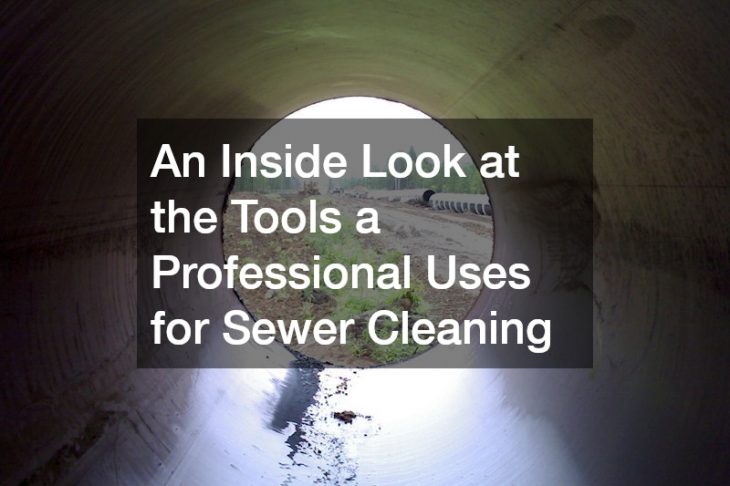
Everything You Wanted to Know About Underground Septic Tanks
Underground septic tanks are a crucial component of modern waste management systems, especially in areas without access to centralized sewage networks. These self-contained treatment systems allow for the efficient breakdown and disposal of wastewater, making them indispensable for residential, commercial, and rural properties. In this article, we delve into the intricacies of underground septic tanks and septic system repair, covering their functionality, installation, maintenance, and regulatory considerations.
What is an Underground Septic Tank?
An underground septic tank is a buried, watertight container designed to collect and treat wastewater from a property. These tanks work in conjunction with a drain field to naturally process and dispose of waste. They are an essential component of on-site wastewater management, particularly in rural areas or locations without access to municipal sewer systems. By using natural biological processes, underground septic tanks break down waste efficiently while minimizing environmental impact.
Definition and Functionality:
Septic tanks serve as the first stage in the wastewater treatment process. When wastewater enters the tank, it separates into three layers: solids settle at the bottom as sludge, lighter materials like grease and oil float to the top as scum, and the liquid effluent remains in the middle. Anaerobic bacteria present in the tank break down organic material, reducing the volume of solid waste. The treated liquid effluent then flows out of the tank and into the drain field, where it is further purified by the surrounding soil. This process helps prevent contamination of groundwater and ensures safe disposal of waste.
Components of a Septic System:
A well-functioning septic system consists of several key components:
-
- Septic Tank:
The primary holding and treatment unit where waste is separated and partially decomposed. - Inlet and Outlet Pipes:
These direct wastewater into the tank and allow treated effluent to exit toward the drain field. - Drain Field (Leach Field):
A network of perforated pipes or chambers that disperses effluent into the soil for further filtration and absorption. - Pump System (if needed):
Some properties require an additional pump to transport effluent from the tank to the drain field, especially if the terrain is not naturally sloped. - Ventilation and Access Ports:
These allow gases to escape and provide access for maintenance and pumping.
- Septic Tank:
History and Evolution of Septic Tanks
The concept of septic tanks dates back to the 19th century. The first recorded septic system was invented by John Mouras in France in the 1860s. His design used a concrete tank to collect household waste, allowing natural bacterial processes to break down solids before releasing effluent into a drainage system. Over time, septic technology improved, with innovations in tank materials, system efficiency, and environmental sustainability. Today, septic systems are engineered to minimize groundwater contamination and maximize waste treatment efficiency. Modern underground septic tanks are built with advanced materials that enhance durability and longevity.
Different Types of Septic Tanks:
There are several types of underground septic tanks available, each with unique advantages and drawbacks:
-
- Concrete Septic Tanks:
Highly durable and long-lasting, concrete tanks resist corrosion and can handle heavy loads. However, they are prone to cracking over time and require professional installation. - Fiberglass Septic Tanks:
Lighter and more resistant to rust than concrete, fiberglass tanks are an excellent option for areas with shifting soil. They are, however, more expensive and can be susceptible to damage if not installed correctly. - Plastic Septic Tanks:
Cost-effective and easy to install, plastic tanks resist corrosion and are lightweight. However, they may not be as durable as concrete or fiberglass and can be damaged by external pressure or shifting soil. - Steel Septic Tanks:
Once popular, steel tanks are now less common due to their susceptibility to rust and corrosion. They have a shorter lifespan and often require replacement sooner than other options. - Aerobic Septic Tanks:
These advanced systems use oxygen to accelerate the breakdown of waste, leading to more efficient treatment. They require electricity to function but are an eco-friendly alternative to traditional anaerobic systems.
- Concrete Septic Tanks:
Why Choose an Underground System?
Installing an underground septic tank offers numerous benefits:
-
-
- Space Efficiency:
Underground placement frees up valuable yard space for landscaping or other uses. - Aesthetic and Odor Control:
Burying the tank keeps it out of sight and reduces odors, improving overall property appeal. - Environmental Protection:
Properly maintained underground septic tanks prevent contamination of nearby water sources and reduce the risk of disease transmission. - Durability and Longevity:
Underground tanks are protected from weather conditions and external damage, leading to a longer lifespan compared to above-ground alternatives. - Regulatory Compliance:
Many local and state regulations require septic tanks to be installed underground to meet environmental and public health standards.
- Space Efficiency:
-
Choosing the right underground septic system depends on various factors, including property size, soil composition, and household water usage. Consulting a septic installer or local septic company ensures proper selection and compliance with regulations.
How Do Underground Septic Tanks Work?
Septic tanks are an essential component of on-site wastewater treatment systems, commonly used in rural areas without access to centralized sewer systems. These underground tanks collect and process household wastewater through natural biological processes and filtration.
Breaking Down the Process
When wastewater from toilets, sinks, and showers enters the septic tank, it undergoes a separation process. Heavier solids settle at the bottom, forming sludge, while lighter materials like grease and oils float to the top as scum. The remaining liquid, known as effluent, is situated in the middle layer. Over time, naturally occurring bacteria within the tank break down organic matter, reducing the accumulation of solid waste.
The Role of Bacteria in Decomposition
Bacteria play a crucial role in the septic system’s functionality. These microorganisms digest organic waste, helping to minimize sludge buildup and prevent blockages. The presence of beneficial bacteria ensures continuous breakdown and treatment of waste, making the system efficient and reducing the frequency of pumping. However, the overuse of antibacterial cleaners and harsh chemicals can disrupt this bacterial balance, potentially leading to system inefficiencies.
Understanding the Drain Field
Once the effluent has been partially treated in the septic tank, it flows into the drain field, also known as the leach field. This is a network of perforated pipes buried in gravel or sand, allowing the liquid to be gradually released into the surrounding soil. The soil naturally filters out contaminants, while beneficial microbes further break down remaining impurities, ensuring that treated water safely reenters the groundwater supply. Proper drain field maintenance is essential to prevent saturation and system failure.
Common Misconceptions
One common myth is that septic tanks require frequent pumping. While periodic pumping is necessary, a well-maintained septic system can function efficiently for years without excessive servicing. The frequency of pumping depends on factors such as tank size, household water usage, and the presence of waste-reducing bacteria. Another misconception is that septic systems can handle anything flushed down the drain—non-biodegradable items, excessive grease, and harsh chemicals can lead to clogs and damage.
Environmental Impact
A properly maintained septic system minimizes environmental risks by preventing untreated sewage from contaminating groundwater. When functioning correctly, the system filters wastewater naturally, protecting nearby water sources from pollutants such as nitrogen and bacteria. However, neglected septic systems can lead to leaks, overflows, and groundwater contamination, posing health hazards and environmental concerns. Regular inspections, responsible water usage, and proper waste disposal practices contribute to a septic system’s longevity and eco-friendliness.
Would you like to add anything specific, such as maintenance tips or troubleshooting advice?
How to Choose the Right Size for Your Septic Tank?
- Factors to Consider:
Household size, daily water usage, and local regulations determine tank capacity. - Residential vs. Commercial Needs:
Larger capacities and enhanced filtration are needed for commercial installations. - Importance of Soil Testing:
Soil permeability affects drainage efficiency and tank placement. - Error Margins in Sizing:
Undersized tanks may lead to frequent backups, while oversized tanks can disrupt bacterial balance. - Professional Assistance:
Consulting a local septic company ensures proper sizing and compliance with regulations.
What are the Installation Steps for Underground Septic Tanks?
- Preparing the Site:
A septic installer assesses the land and obtains necessary permits. - Ensuring Compliance with Regulations:
Permit expediters help navigate zoning and environmental laws. - Choosing the Right Materials:
Concrete, fiberglass, and plastic tanks offer various benefits in terms of durability and cost. - Step-by-step Installation Process:
Excavation service providers dig the site, install the tank, and connect it to the plumbing system. Look for local excavation contractors that are insured and aware of the regulations in your area. - Final Inspection and Approval:
Authorities inspect and approve the system before use. Bring in local landscape designers if the installation process has created damage to your lawn.
How to Properly Maintain Your Septic Tank?
- Regular Inspection Guidelines:
Annual inspections help detect issues early. - Signs That Indicate Problems:
Slow drains, foul odors, and pooling water signal trouble. - DIY Maintenance Tips:
Reducing water usage, avoiding non-biodegradable waste, and adding bacterial treatments can prolong tank life. - When to Call a Professional:
Persistent issues require expert septic pumping and repair services. - Cost of Maintenance:
Routine maintenance costs vary but prevent expensive repairs.
What are Common Problems with Septic Tanks and How to Fix Them?
- Identifying Symptoms of Failure:
Backups, gurgling sounds, and strong odors indicate a malfunctioning system. - Troubleshooting Techniques:
Checking the drain field, pumping the tank, and inspecting pipes can resolve minor issues. - Prevention Strategies:
Regular pumping, mindful waste disposal, and proper landscaping prevent system failures. - Repair vs. Replacement:
Minor repairs can extend a tank’s lifespan, while severe damage necessitates replacement. - Dealing with Backup and Overflow:
Emergency excavation services may be needed to resolve severe blockages.
How Much Does an Underground Septic Tank Cost?

- Breakdown of Costs:
Installation costs vary based on tank size, materials, and excavation needs. - Factors Influencing Expenses:
Soil conditions, labor rates, and permit fees contribute to total costs. - Budget-Friendly Options:
Some plastic tanks offer a lower-cost alternative to concrete or fiberglass models. - Financing and Incentives:
Government grants and financing options may be available for septic system installation. - Long-term Financial Planning:
Investing in high-quality components reduces long-term maintenance expenses.
How Does Climate Impact Underground Septic Tanks?

- Effects of Temperature Fluctuations:
Extreme cold can freeze pipes, while heat accelerates bacterial activity - Design Modifications for Extreme Climates:
Insulated pipes and deeper installations protect against freezing. - Winterization Techniques:
Adding insulation and using additives prevent system damage in cold climates. - Storm Preparedness:
Flooding can overwhelm septic systems, requiring strategic drainage solutions. - Adapting to Drought Conditions:
Efficient water usage reduces strain on septic systems during dry spells.
Legal and Environmental Regulations for Septic Tanks

- Understanding Local Permits:
Local regulations dictate tank placement, installation requirements, and system capacity, ensuring compliance with zoning laws and health standards. Homeowners and contractors must obtain necessary permits before installation. - Compliance with Environmental Protection Agencies:
Proper system design, regular maintenance, and adherence to waste disposal guidelines help prevent groundwater contamination and protect ecosystems. Violations can result in fines or legal action. - Impact Assessments and Reports:
Regulatory bodies may require site evaluations, soil testing, and environmental impact assessments to ensure that septic systems do not negatively affect nearby water sources or public health. - Recent Changes in Legislation:
Laws continue to evolve, promoting eco-friendly waste management practices, stricter monitoring, and the adoption of advanced treatment technologies to reduce pollution. - International Standards and Practices:
Different countries enforce varying regulations regarding septic system installation, maintenance, and wastewater treatment, with some adopting stricter sustainability and public health guidelines.
New Technologies and Innovations in Septic Tank Systems

- Advancements in Tank Materials:
Modern materials such as high-density polyethylene and fiberglass enhance durability, improve resistance to corrosion, and extend the lifespan of septic systems. - Integration with Smart Home Systems:
IoT technology allows for real-time remote monitoring of septic levels, performance, and potential issues, providing homeowners with greater control and reducing the risk of system failures. - Eco-Friendly Designs:
Innovations in septic system designs prioritize water conservation, reduced energy consumption, and minimal environmental impact through improved filtration and treatment processes. - Monitoring and Automation:
Smart sensors and automated alerts enable homeowners to schedule timely maintenance, preventing costly repairs and ensuring optimal system functionality. - Future Trends in Waste Management:
The industry continues to evolve with a focus on sustainable solutions, such as advanced treatment systems and microbial technologies, to enhance waste processing efficiency and promote environmental responsibility.
Understanding underground septic tanks is essential for property owners seeking to ensure efficient and effective wastewater treatment. Proper selection, professional installation, and routine maintenance not only extend the lifespan of these systems but also play a crucial role in preventing groundwater contamination, protecting ecosystems, and maintaining overall public health. A well-maintained septic system reduces the risk of costly septic repair, backups, and environmental hazards, making it a key investment for any property owner.
Consulting experienced local septic company professionals and excavation service providers is vital for ensuring regulatory compliance, optimizing system performance, and addressing site-specific challenges. These experts provide guidance on local permit requirements, soil suitability assessments, proper tank sizing, and best practices for long-term system care. Their expertise helps homeowners avoid common installation errors and ensures that septic systems function efficiently for years to come.
With advancements in technology—such as smart monitoring systems, improved filtration methods, and eco-friendly designs—septic systems are becoming more efficient and environmentally sustainable. Smart sensors now allow real-time tracking of tank levels and system performance, reducing the likelihood of unexpected failures and simplifying maintenance. Additionally, innovative treatment methods are enhancing waste decomposition and minimizing environmental impact, further aligning septic systems with modern sustainability goals.
Furthermore, ongoing regulatory changes continue to shape industry standards, emphasizing water conservation, pollution reduction, and the integration of green technologies. As governments and environmental agencies push for stricter guidelines and improved waste management solutions, property owners must stay informed and proactive in adapting to these evolving standards.
Ultimately, the future of septic systems promises greater reliability, reduced environmental impact, and enhanced convenience for property owners. By embracing modern technologies, adhering to best practices, and working with industry professionals, homeowners can ensure that their septic systems remain efficient, compliant, and sustainable for years to come.

